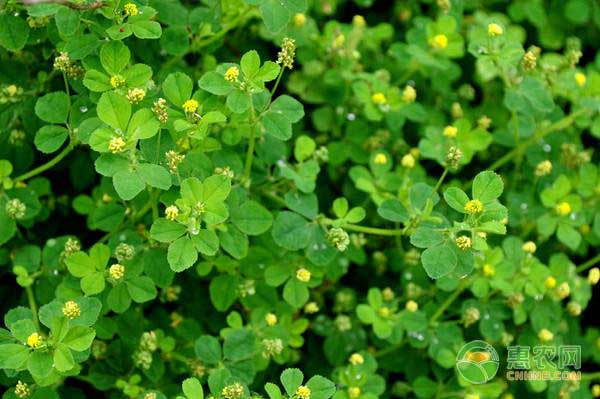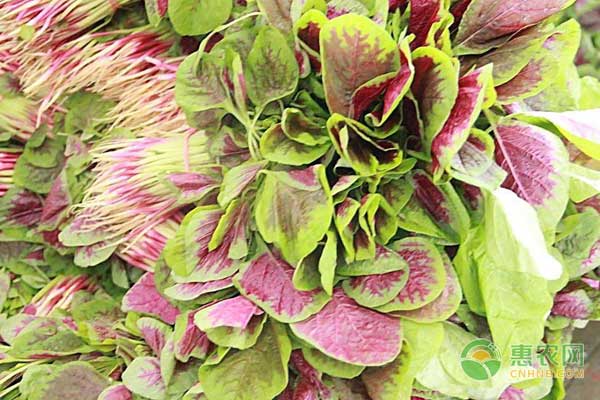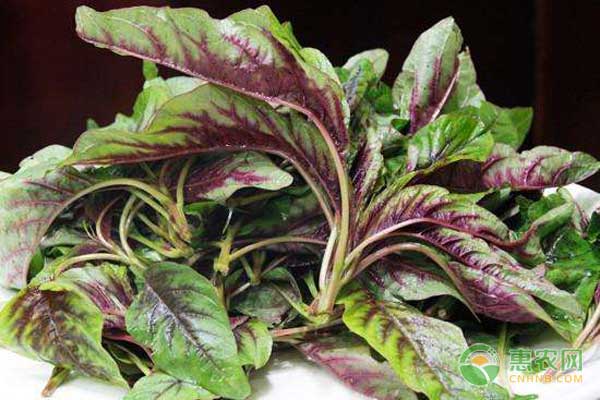Double-crop cultivation technique of greenhouse vegetable-苜蓿èœ
Vegetable leeks and leeks are vegetables that residents in Jiangsu, Zhejiang and Shanghai enjoy. They eat vegetables in winter and spring, eat leeks in summer and autumn, and can use alternate greenhouse vegetable greenhouses and amaranth planting techniques, which not only improves the utilization rate of greenhouses, but also greatly improves the utilization. Economic benefits.

1 èŒ¬å£ arrangement
The results of the survey indicate that the cultivation method of the rapeseed-è‹‹èœ can achieve two-year maturity and annual supply of facilities. From August to March of the next year, planting vegetables can be harvested 10 to 12 times, the cumulative output of 667m2 can reach 1300 kg, and the annual output value of 667m2 is 9,500 yuan. In April, the vegetable meal is returned to the field as green manure, from the end of March to 8 Planting leeks in the month, sowing once, harvesting a batch, can harvest 6 batches, the cumulative output of 667m2 is 4000kg, and the annual output value is 14000 yuan. In the whole year, the total output of two kinds of vegetables is 667m2, which is 23,500 yuan, and the net income of 667m2 is up to 15,000 yuan.
2 Vegetable cultivation points
2.1 Variety selection
Choose the Wenling big leaf yellow flower head of Zhejiang Wenling with fast growth and late flowering time.
2.2 Soil preparation and fertilization
Each 667m2 of fertilized organic fertilizer 1000~1500kg, potassium sulfate type compound fertilizer (15-15-15) 35kg, and then plowed the soil, 3~5 days before sowing, the rake face width is 1.5 m, the groove width is 0.25 m, The groove depth is 0.2 m and the surface is flat.
2.3 Sowing
In order to ensure a high emergence rate, the shelled spiral pods are generally used, from 50 to 60 kg per 667 m2 from mid-August to mid-September, 30 to 40 kg per 667 m2 after late September, and 50 before sowing.多 carbendazim wettable powder or 70% methyl thiophanate (methyl sulphate) wettable powder 1200 times soaking for 24h, then spread on the soil surface, cover the soil with small nails and cover the seeds evenly, then pour it once with micro-sprinkling permeable.
2.4 weeding
Before sowing watering, the herbicide should be closed in time with Shitianbu (methamphetamine), and 667m2 should be sprayed with 60~100mL of water 30kg. After emergence, the weeds in the field should be removed by manual removal to ensure that there is no weed in the field at each harvest.
2.5 Fertilizer management
After cutting 2 batches of rapeseed meal, the fertilizer is chased once every 1~2 days. Generally, every time 667m2, 10kg of potassium sulphate compound fertilizer (15-15-15) and 5kg of diammonium phosphate are evenly applied, if the soil is dry. After applying the fertilizer, it can be properly irrigated by spray drip irrigation. After entering the winter, the greenhouse is basically closed, and urea should be used with caution to prevent burning yellow leaves.

2.6 Ventilation
In the sunny weather, the temperature and humidity in the shed should be properly ventilated. During the day, the temperature in the shed should be maintained at 20~30°C. If it exceeds 30°C, it should be ventilated and cooled in a timely manner. The ventilation time on cloudy days is short and the sunny day is long.
2.7 Pest Control
The main pests of the vegetable mites are underground pests, mites and stem-leaf pests, and the diseases mainly include rickets, blight, and sclerotinia.蛴螬 and è¼è›„ can be uniformly applied to 667m2 with 3% phoxim granules 2kg during the preparation of the soil; mites can be sprayed with 10% imidacloprid WP 2500 times; sputum disease, blight can be used 72.2% Hydrochloric acid saline 60~100 mL/667m2 plus 30~50 L water spray on the rhizome; Sclerotinia sclerotiorum can be sprayed with 50% isoform urea wettable powder 1000 times solution; pesticides are prohibited for 15 days before harvest.
2.8 Harvest
It can be harvested about 15 days after the seedlings are planted, and the use of light and convenient high-efficiency harvesters can greatly improve work efficiency. From September to March of the next year, 10~12茬 can be harvested.
3 Amaranth cultivation points
3.1 Variety selection
Choose a new generation of Taiwanese round yellowish white leeks with good gloss, heat resistance, slightly cold resistance, and disease resistance, or a new generation of improved Hong Kong species, large round leaf red leeks. The local market consumption is mainly yellowish white leeks.
3.2 Site preparation
In the middle and late March, the market demand for rapeseed meal decreased, and the price was lower. At this time, the vegetable meal was rotated and returned to the field to improve the soil structure. In combination with the preparation of the ground, each plant can be properly applied with 500~1000kg of decomposed organic fertilizer and 25~15kg of 15-15-15 (NPK) potassium sulphate type compound fertilizer. Then it can be cultivated by rotary tiller to mix the fertilizer with the tillage layer. Leveling the surface and making the ground fine, in order to facilitate the emergence of seedlings. When planting the second to sixth batch of leeks, considering the cost input, organic fertilizer is generally not used. Only 25~30kg of potassium sulphate type compound fertilizer is used as the base fertilizer per 667m2 during rotary tillage.
3.3 Sowing
From March to June, the variety of seeds used for 667m2 is 2.0~2.5kg, and the amount of seeds used per 667m2 from July to September can be reduced to 1.5~2.0kg. The sowing method is uniform to the kneading surface, no more covering the soil, covering the shading net or non-woven fabric, and then pouring the water with a micro-sprinkling method.
3.4 weeding
After emergence, the weeds in the field should be removed by manual removal to ensure that there is no weed in the field at each harvest.
3.5 Fertilizer management
On the basis of pouring the bottom water, no water is poured before emergence. 5 to 7 days after sowing, the temperature of the closed shed is mainly used. After the emergence of the seedlings, the sunshade net and non-woven fabric covering the kneading surface are quickly taken out, so that they can fully receive the sunlight and make it grow rapidly. In the later stage, the soil condition should be properly supplemented with water. Because the amaranth growth period is short, the early base fertilizer can be used, and the growth period is no longer topdressing.
3.6 Ventilation
Amaranth is a warm-heated vegetable, and spring insulation measures are essential. The temperature in the shed is maintained at 20~25°C from the sowing to the harvesting shed, and the humidity in the shed is reduced by using the weather in the sunny weather. After entering the summer, the greenhouse should be fully ventilated and cooled, and the two sides of the greenhouse should be opened and ventilated to prevent excessive humidity and high temperature in the shed, and the white rust and rotten roots and rotten stems of the leek occur greatly.

3.7 Pest Control
Amaranth pests mainly include snails, aphids, and cabbage caterpillars. The main diseases are viral diseases and white rust. Snail control, generally in the early stage of amaranth germination with 6% tetraacetaldehyde granules 0.5kg / 667m2 evenly spread on the surface; aphids can be sprayed with 10% imidacloprid WP 2500 times spray; cabbage caterpillar can use 10% methyl salt brine Dispersed granules 1500 times liquid spray control. It is recommended to use insect-proof nets to prevent insects, set up yellow boards in the field, or use frequency-vibration insecticidal lamps, black light lamps, etc. to induce pests to prevent green pests. White rust can be controlled by spraying with 64% cream and manganese-zinc wettable powder 500 times in the early stage of the disease; virus disease can be controlled by spraying with 20% virus A wettable powder 500 times. In the summer high temperature season medication must pay attention to prevent the occurrence of phytotoxicity, should choose to apply the medicine when it is cool in the morning and evening, and at the same time do ventilation and cooling work.
3.8 Harvesting
In order to increase the output, it is a method of harvesting once and harvesting once. The average plant height is 15~20cm. After 45 days of sowing in spring, it can be harvested after 25 days of sowing in summer.
The above is the alternate cultivation technique of rapeseed and leek, I hope to help you. Xiaobian warm reminder, the development of alternate planting technology is best to choose the planting varieties according to local market demand, in order to maximize planting benefits.
Fresh Half Shell Mussel Meat,Half Shell Mussel Meat,Frozen Cooked Mussel Meat,Frozen Mussel
Shengsi Huali Aquatic Products Co.,Ltd , https://www.mytilus-edulis.com